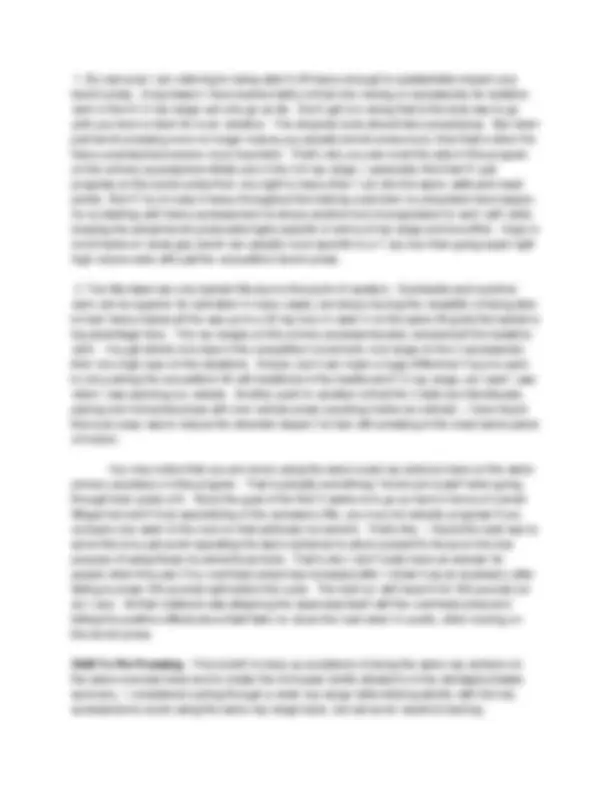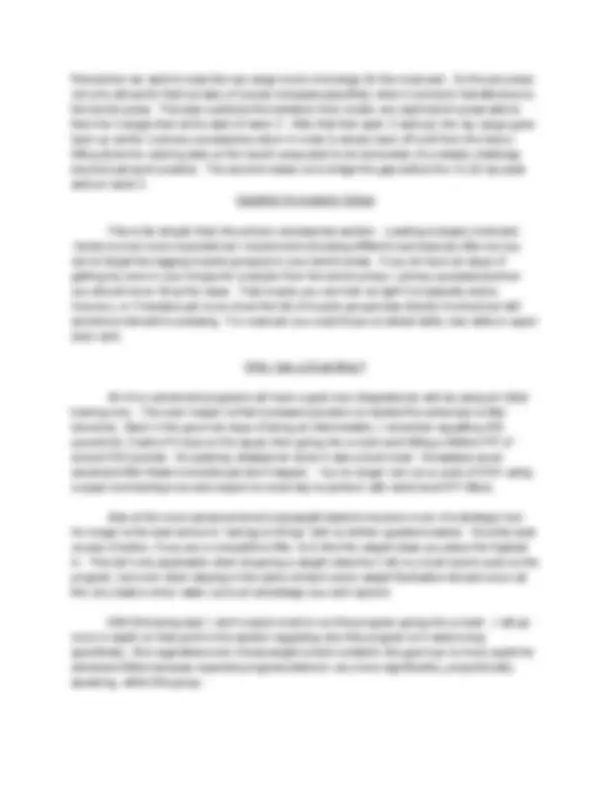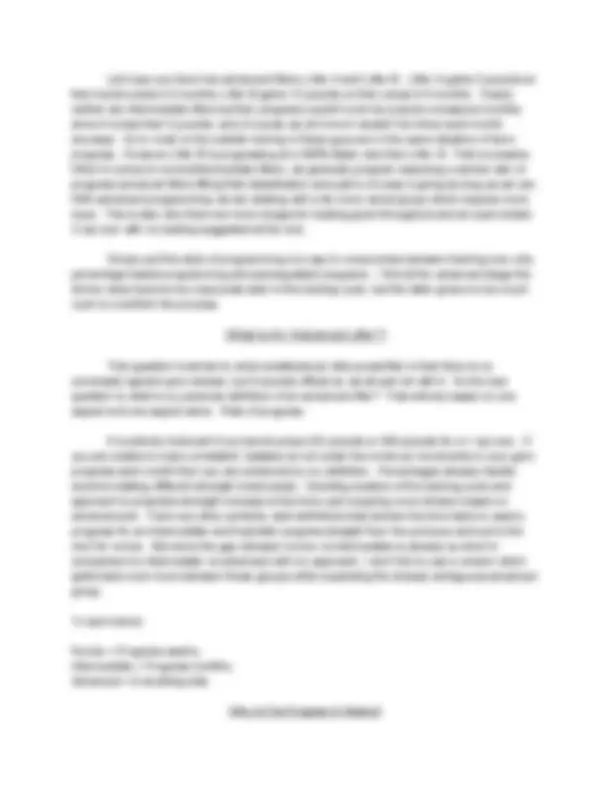





Study with the several resources on Docsity

Earn points by helping other students or get them with a premium plan


Prepare for your exams
Study with the several resources on Docsity

Earn points to download
Earn points by helping other students or get them with a premium plan
Community
Ask the community for help and clear up your study doubts
Discover the best universities in your country according to Docsity users
Free resources
Download our free guides on studying techniques, anxiety management strategies, and thesis advice from Docsity tutors
This program is built primarily for an advanced lifter looking to set aside a period of time to focus on overloading the bench press with high frequency, ...
Typology: Schemes and Mind Maps
1 / 7

This page cannot be seen from the preview
Don't miss anything!




by Jonnie Candito
This program is built primarily for an advanced lifter looking to set aside a period of time to focus on overloading the bench press with high frequency, volume, and specificity. Also this is executed while varying the approach from normal training outside of this specialized program as well as within the cycle (dramatic difference between first 3 weeks vs the rest). This is intentional because after a certain point, even with smart training, you tend to run into a wall especially as a natural lifter. This is the place I was at when I went a full year only increasing my bench press literally by about 0 pounds along with having minor recurring shoulder pain. I say about because technically it increased by 5.5 pounds, but if you look up "2013 National Powerlifting Meet" on my channel and compare it to "IPF Raw World Championship Meet" from 2014 you will see that realistically my max was likely unchanged if attempt selection was the same.
Direct links to referenced videos here https://www.youtube.com/watch?v=oH5Q6JxoADU vs https://www.youtube.com/watch?v=LaZPkhIsbig
After being honest with myself that I have slammed into a wall, despite initially making consistent progress on my bench for years, I started to piece together what would eventually become this program. I scrapped the whole “bench press more to bench press more” oversimplified approach that I used to avoid taking accessories seriously. Also the standard 23x a week frequency year round approach was not doing me any wonders as the same basic input was causing the same output. Thirdly, I noticed I was consistently peaking too soon on the bench press. Volume would gradually drop, intensity would rise, but supercompensation just wasn’t evident on meet day.
So all of this brings me to what I am presenting in the following pages and ultimately in the Excel document. I have managed to turn around my bench press progress significantly now to say the least. I hit a 350 pound bench press in the gym followed by a 347 pound bench press in competition which ended up being the lift I improved on the most out of all 3 during 2015, judging strictly by meet PRs. I gained about 30 pounds on my bench press without gaining a single pound of bodyweight. Then afterwards when I ran the program a 2nd time while dropping a weight class, I was able to bench press 2 times my bodyweight which is an accomplishment I honestly did not know if I’d ever be able to do.
My bench press is still my worst lift out of the big 3, I am certainly not the most genetically gifted in this aspect of powerlifting. Also not many realize that I have actually been bench pressing much longer than any other lift, so progress in it naturally should be the most difficult. However with this program I have finally figured out both how to increase my bench
beyond what was seeming to be a limit for me along with setting it up to be adaptable in a long term approach.
First 3 weeks Maximum Fatigue Phase. 5x a week, goal is fatigue + accumulating high weekly volume with emphasis on accessories. Skill in bench press developed very well too but bar speed kept fast as effort on competition lift is low. Goal is simply working so hard that your body has no choice but to react to the collective stimulus. On week 3 a range is given it is intentional to allow for autoregulation based on the day. I recommend hitting the max end of that range at least once during the week. Also, the reason behind building up to 90% by week 3 is to essentially have a mini peak within the cycle when fatigued. It will help you get a good judgement on how realistic your goal max is which is useful since most of the cycle is so deep into being sub maximal. Weeks 4 High Volume W/ Specificity And Full Recovery Phase. 2x a week, goal is as much volume per session on the bench itself while being able to keep intensity gradually climbing. Expect great deal of soreness but near full recovery in between sessions. Week 5 High Intensity Peak Set Phase. Goal is to hit some rep PRs but intentionally keeping it to a conservative 3 rep peak set followed by the next workout being a true 5 rep max at the end with backoff sets to keep volume up. The philosophy on this program is valuing volume with an extremely short and minor taper off on the bench press compared to what I recommend on the squat/deadlift. Week 6 Max Out Phase.
Loading As mentioned in the “General Guidelines To Program” sheet on the excel document, the loading is intentionally unlisted on the 2 main accessories. If you are using the RPE scale, I’d say these sets should be around an RPE 9. Another suggestion is to use weights you don’t normally gravitate towards so that you can both make small steps of progress and avoid getting lost in constantly trying to prove something to yourself on an accessory. I cannot emphasize enough that obsession with loading on accessories is unnecessary. Make it heavy enough to get a noticeable stimulus, light enough that you aren’t getting so amped up for a set of incline press that you’re looking like Pete Rubish going for an 800 pound deadlift in front of his washing machine.
Rep Schemes The rep ranges were determined based on 2 things:
Remember we want to keep the rep range low to mid range for the most part. So the pin press not only allows for that but also of course increases specificity when it comes to transference to the bench press. This also cushions the transition from mostly very light bench press sets to then the 3 single then at the start of week 3. After that first week 3 workout, the rep range goes back up as the 2 primary accessories return in order to simply back off a bit from the heavy lifting since the working sets on the bench press start to be somewhat of a notable challenge beyond just sport practice. The second reason is to bridge the gap before the 15 20 rep peak sets on week 4.
This is far simpler than the primary accessories section. Loading is largely irrelevant. Variety is even more important as I recommend choosing different exercises as often as you can to target the lagging muscle group(s) in your bench press. If you do have an issue of getting too sore in your triceps for example from the bench press + primary accessories then you should never force the issue. That means you can train so light it is basically active recovery, or if needed just move down the list of muscle groups less directly involved but still somehow relevant to pressing. For example you could focus on lateral delts, rear delts or upper back work.
All of my advanced programs will have a goal max integrated as well as using an initial training max. The main reason is that increased precision is needed the advanced a lifter becomes. Back in the good ole days of being an intermediate, I remember squatting 455 pounds for 3 sets of 6 reps on the squat, then going into a meet and hitting a lifetime PR of around 535 pounds. No peaking whatsoever since it was a local meet. Nowadays as an advanced lifter these moments just don’t happen. You no longer can run a cycle of 5/3/1 using a super low training max and expect on meet day to perform with world level IPF lifters.
Also at the more advanced level bodyweight starts to become more of a strategic tool. No longer is the best advice to “eat big to lift big” with no further questions asked. Now the best course of action, if you are a competitive lifter, is to find the weight class you place the highest in. This isn’t only applicable when dropping a weight class like I did my most recent cycle on the program, but even when staying in the same division some weight fluctuation should occur (at the very least a minor water cut is an advantage you can’t ignore).
With this being said, I don’t expect most to run this program going into a meet. I will go more in depth on that point in the section regarding why this program is 6 weeks long specifically. But regardless even if bodyweight is held constant, the goal max is more useful for advanced lifters because expected progress starts to vary more significantly, proportionally speaking, within this group.
Let’s say you have two advanced lifters, Lifter A and Lifter B. Lifter A gains 5 pounds on their bench press in 6 months, Lifter B gains 15 pounds on their press in 8 months. Clearly neither are intermediate lifters as their progress couldn’t even be properly measured monthly since it is less than 5 pounds, and of course we all know it wouldn’t be linear each month anyways. So to most on the outside looking in these guys are in the same situation of slow progress. However Lifter B is progressing at a 300% faster rate than Lifter A! That is massive. When it comes to novice/intermediate lifters, we generally program assuming a similar rate of progress across all lifters fitting that classification and just try to keep it going as long as we can. With advanced programming we are dealing with a far more varied group which requires more input. This is also why there are more ranges for loading given throughout and an open ended 5 rep max with no loading suggested at the end.
Simply put this style of programming is a way to compromise between training max only percentage based programming and autoregulated programs. I find at the advanced stage the former does become too inaccurate later in the training cycle, but the latter gives me too much room to overthink the process.
This question is similar to what constitutes an elite powerlifter in that there is no universally agreed upon answer, but it sounds official so we all just roll with it. So the real question is what is my personal definition of an advanced lifter? That entirely based on one aspect and one aspect alone. Rate of progress.
It is entirely irrelevant if you bench press 225 pounds or 500 pounds for a 1 rep max. If you are unable to make consistent, testable (ie not under the minimum increments in your gym) progress each month then you are advanced by my definition. Percentages already handle accommodating different strength levels easily. Deciding duration of the training cycle and approach to projected strength increase is the tricky part requiring more division based on advancement. There are other perfectly valid definitions that shorten the time table to weekly progress for an intermediate and trackable progress straight from the previous workout to the next for novice. But since the gap between novice vs intermediate is already so short in comparison to intermediate vs advanced with my approach, I don’t like to use a version which splits hairs even more between those groups while expanding the already ambiguous advanced group.
To summarize:
Novice = Progress weekly. Intermediate = Progress monthly. Advanced = Everything else.
Why Is The Program 6 Weeks?
established earlier that this bench program is made with the idea that the lifter will allow himself to focus on each lift at a time, at least during the high frequency stage. As long as you understand those two points, you can try out whatever you want. If it works well for you then by all means go for it.
How Often Can This Program Be Repeated?
I strongly recommend that you always avoid running this program twice in a row. A solid general rule is a minimum of a 4 week break in between. I included a sample 1x a week offseason workout that I use for this time as a seprate sheet in the excel document. Also I strongly recommend choosing at least 1 different primary accessory exercise when restarting a new cycle. Overuse injuries tend to occur when we get greedy. Beyond that I am also a big believer in intentionally reducing volume for periods of time to allow for the stimulus to have a greater effect when a new cycle begins.